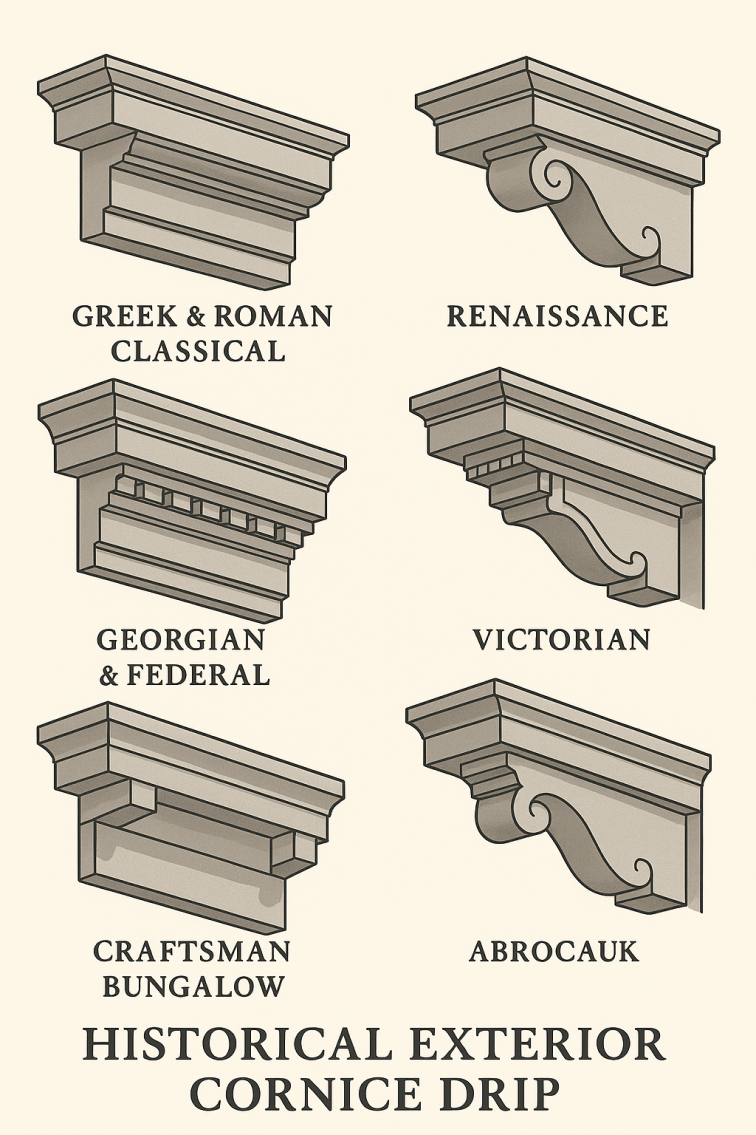A historical exterior cornice drip refers to a key architectural detail found on classical cornices that helps manage water runoff while adding decorative emphasis. Let’s break it down:
🔍 Definition
-
-
-
-
A cornice is the uppermost section of moldings along the top of a wall or building, often part of the entablature in classical architecture.
-
-
-
A drip (or drip edge, drip molding) is a projecting feature designed to throw water away from the face of the wall to prevent staining, erosion, or water infiltration.
🏛️ Historical Styles with Cornice Drips
1. Greek & Roman Classical Cornices
Feature: Drip groove (cyma recta or cyma reversa moldings), mutules or modillions with overhanging soffits.
Drip Function: The projection itself and carved gutter lines helped divert rain away.
Example: Doric cornices often had a flat corona with a carved drip groove underneath.
2. Renaissance Cornices
Feature: Deep overhangs with egg-and-dart moldings and dentils.
Drip: Often integrated as a sharp edge or cavetto at the bottom of the projecting member.
3. Baroque & Rococo Cornices
Feature: Bold, curved cornices with scrollwork and brackets.
Drip: Water-shedding grooves were hidden in ornamental flourishes or scrolled modillions.
4. Georgian & Federal Cornices
Feature: Straight, symmetrical moldings with dentils or crown profiles.
Drip: A distinct, linear drip edge often built into the fascia or lower molding.
5. Victorian Cornices
Feature: Highly decorative with brackets and multiple layers of moldings.
Drip: Sometimes incorporated metal flashing or pronounced wood projections to manage water.
6. Craftsman Bungalow Eaves
Feature: Wide eaves with exposed rafters.
Drip: Extended rafter tails or small crown moldings beneath the eave carried the drip function.
🧱 Materials Historically Used
Stone: Carefully carved drip lines and projections in classical architecture.
Wood: Layered moldings with crown or ogee profiles in early American homes.
Terra cotta or plaster: Used in Beaux-Arts or Italianate buildings with ornate cornices.
Lead or copper flashing: Sometimes added for durability on top of projecting moldings.



